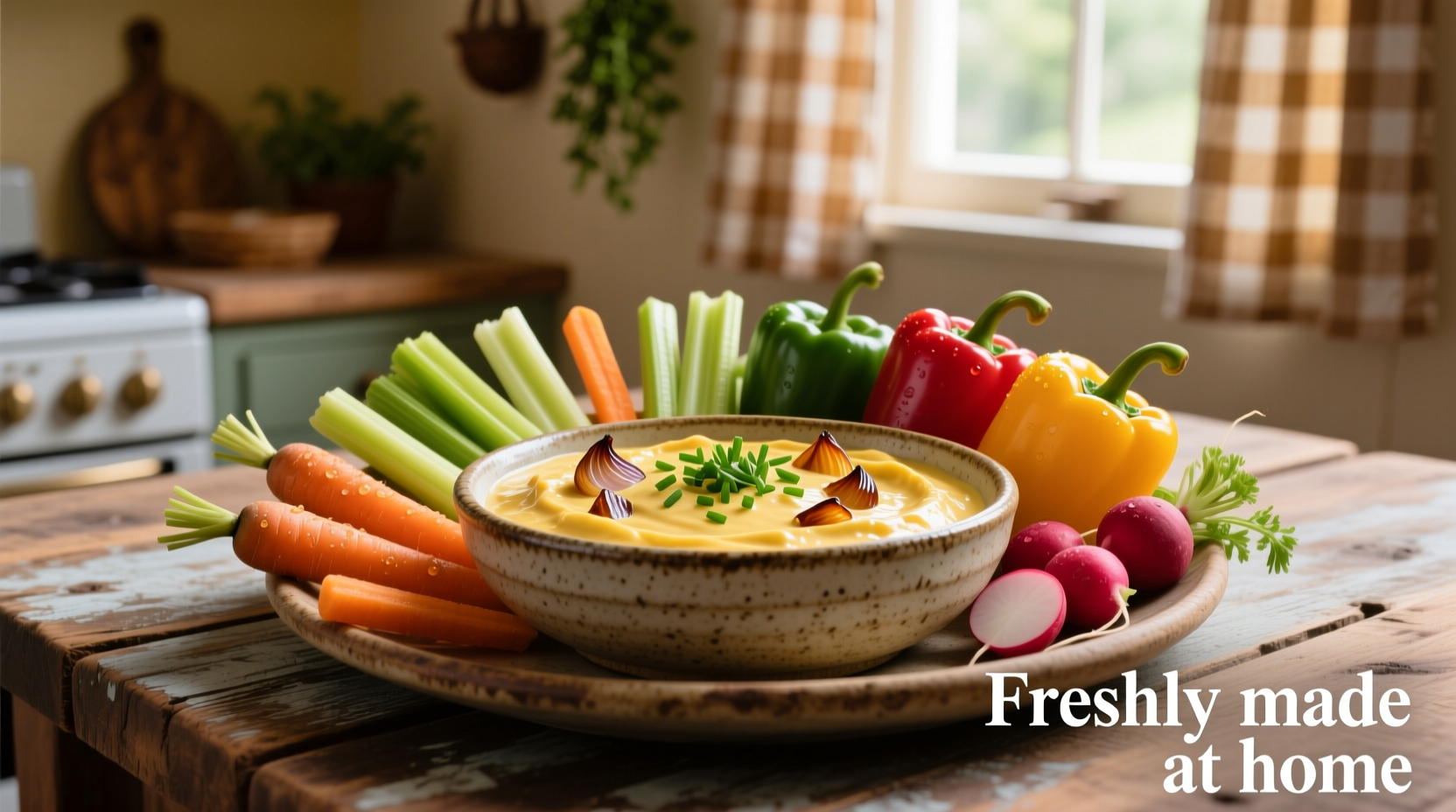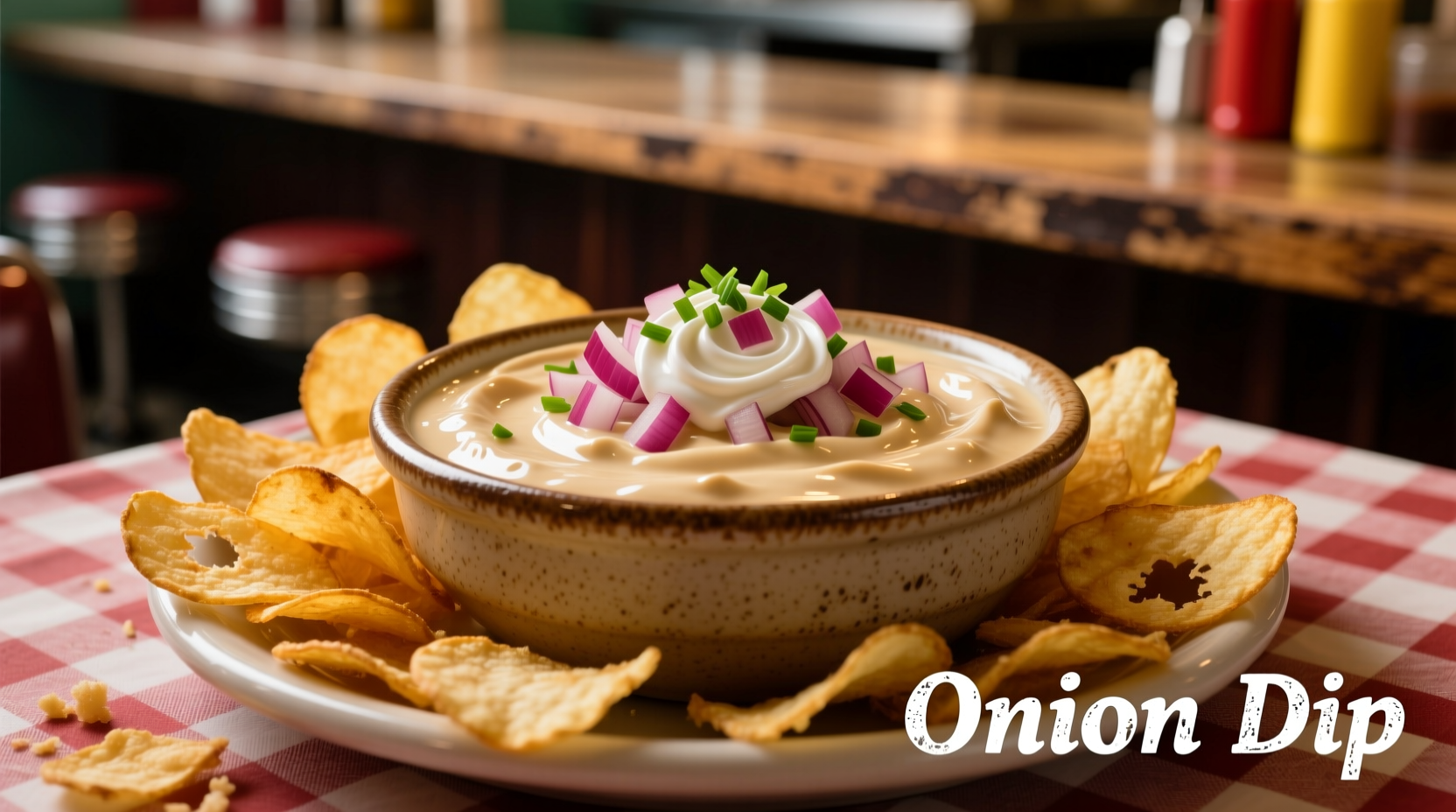Nothing transforms a simple gathering into a memorable occasion quite like a perfectly crafted onion dip. Whether you're hosting a game day celebration or preparing a quick snack, this versatile condiment delivers rich, savory flavors that complement everything from crispy potato chips to fresh vegetable crudités. Our comprehensive guide reveals professional techniques for creating onion dip that balances sweet, savory, and creamy elements flawlessly.
The Essential Onion Dip Framework
Creating exceptional onion dip starts with understanding its fundamental components. While recipes vary, three critical elements determine your dip's success: onion preparation method, dairy base selection, and seasoning balance. Professional chefs consistently emphasize that the cooking technique applied to onions makes the most significant difference in final flavor quality.
| Onion Type | Best For | Preparation Time | Flavor Profile |
|---|---|---|---|
| Yellow Onions | Classic French dip | 25-30 minutes | Rich, sweet when caramelized |
| Red Onions | Vibrant colorful dips | 15-20 minutes | Sharp with subtle sweetness |
| Shallots | Elegant party dips | 20-25 minutes | Mild, complex, delicate |
| Green Onions | Quick fresh dips | 5-10 minutes | Grassy, mild onion flavor |
Classic French Onion Dip: Step-by-Step
The iconic French onion dip that graced countless 1950s-60s parties has evolved from its original Lipton soup mix version to sophisticated homemade creations. According to culinary historians at the Food Timeline organization, the modern French onion dip emerged when home cooks began caramelizing real onions instead of relying solely on powdered mixes.
Follow these professional techniques for restaurant-quality results:
- Proper onion cooking: Slice 2 large yellow onions thinly and cook slowly over medium-low heat with 2 tablespoons of butter and 1 tablespoon olive oil. This dual-fat approach prevents burning while enhancing flavor development.
- Caramelization timing: Cook onions for 25-30 minutes, stirring occasionally, until deep golden brown. Rushing this process creates bitter flavors rather than the desired sweet complexity.
- Dairy selection: Combine cooled onions with 1 cup full-fat sour cream, 1/2 cup mayonnaise, 1 teaspoon Worcestershire sauce, and 1/4 teaspoon garlic powder. Full-fat dairy provides essential texture that low-fat alternatives cannot replicate.
- Resting period: Refrigerate the dip for at least 4 hours (ideally overnight) to allow flavors to meld completely. This crucial step transforms good dip into exceptional dip.
Creative Variations Worth Exploring
Once you've mastered the classic version, these chef-approved variations offer exciting new dimensions to your onion dip repertoire:
- Caramelized Balsamic Onion Dip: Add 2 tablespoons balsamic vinegar during the final 5 minutes of onion cooking for sophisticated sweet-tart complexity
- Greek Yogurt Ranch Onion Dip: Substitute half the sour cream with full-fat Greek yogurt and add 1 tablespoon each of dried dill, parsley, and chives
- Smoked Gouda Onion Dip: Incorporate 1/2 cup finely grated smoked gouda after combining other ingredients for a subtle smoky depth
- Vegan Onion Dip: Use cashew cream base with 1 tablespoon nutritional yeast and 1/2 teaspoon smoked paprika for umami richness

Perfect Pairings: What to Serve With Onion Dip
The right pairing elevates your onion dip from simple snack to culinary experience. Consider these professional pairing recommendations based on texture and flavor compatibility:
- Classic potato chips: Choose thick-cut, kettle-cooked varieties that provide sturdy dipping capability without breaking
- Fresh vegetable crudités: Bell peppers, cucumber slices, and endive leaves offer refreshing contrast to the dip's richness
- Pita chips or bagel chips: Provide satisfying crunch while complementing the savory onion flavor
- Protein pairings: Serve alongside grilled chicken skewers or as a topping for baked potatoes for complete meal integration
Storage and Make-Ahead Guidance
Understanding proper storage techniques ensures your onion dip maintains optimal flavor and safety. According to USDA food safety guidelines, dairy-based dips should be refrigerated within 2 hours of preparation. When stored in an airtight container, homemade onion dip typically remains fresh for 3-4 days.
Interestingly, onion dip often improves in flavor after 24 hours as the ingredients fully integrate. For best results, prepare your dip one day before serving and add fresh herbs or a sprinkle of paprika just before presentation for visual appeal.
Troubleshooting Common Issues
Even experienced cooks encounter challenges with onion dip preparation. Here's how to address frequent problems:
- Too thin consistency: Drain excess liquid from sour cream overnight in a cheesecloth-lined strainer, or add 1-2 tablespoons of cream cheese to thicken
- Overly sharp onion flavor: Balance with 1/2 teaspoon honey or maple syrup, or let the dip rest longer to mellow flavors
- Bland taste: Enhance with additional Worcestershire sauce (1/4 teaspoon at a time) or a pinch of smoked salt
- Separation issues: Ensure all ingredients are at room temperature before mixing, and avoid overmixing which can break the emulsion
Onion Dip Evolution Timeline
Understanding the historical context of onion dip reveals why certain techniques have stood the test of time:
- 1950s: French onion dip emerges using dehydrated onion soup mix with sour cream, popularized by Lipton
- 1960s-70s: Home cooks begin adding real caramelized onions to elevate the basic recipe
- 1980s-90s: Dip variations multiply with the introduction of Greek yogurt and reduced-fat alternatives
- 2000s-present: Artisanal approach focuses on high-quality ingredients and creative flavor combinations











 浙公网安备
33010002000092号
浙公网安备
33010002000092号 浙B2-20120091-4
浙B2-20120091-4